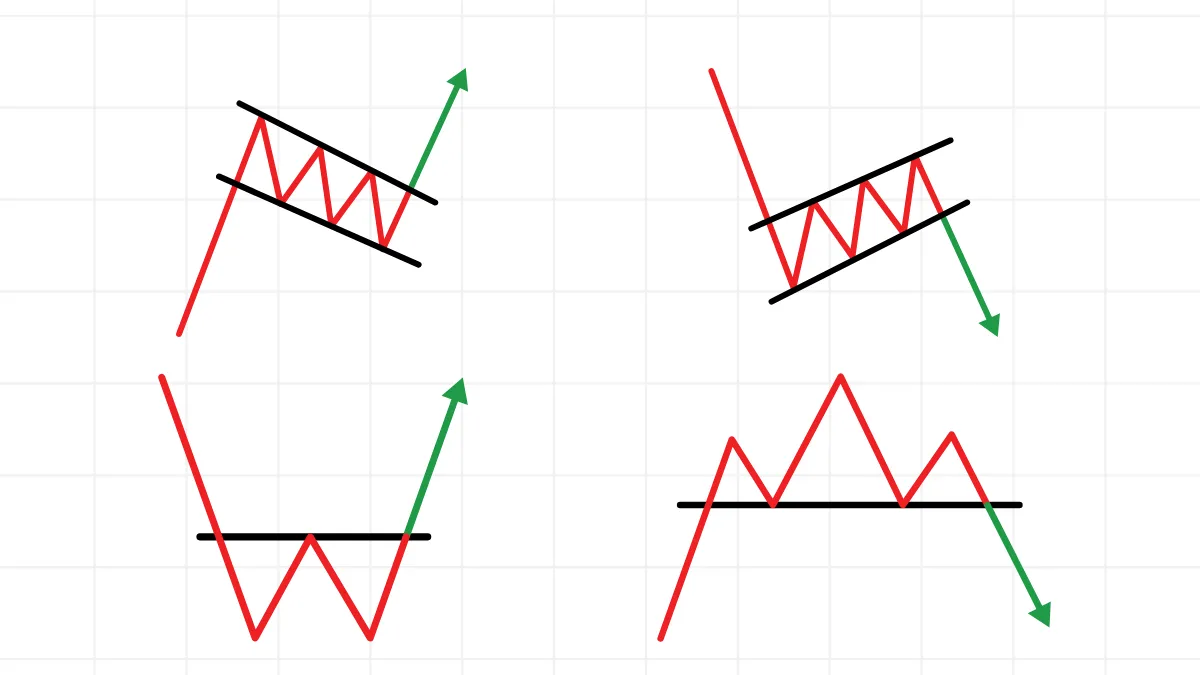Introduction to Forex Fundamental Analysis: Interpreting Economic Data and News to Gain Market Insights
If you want to understand why a country's currency appreciates or depreciates, beyond just seeing price movements on charts, you need to learn about "Fundamental Analysis".Unlike Technical Analysis, which focuses on price charts, fundamental analysis looks at the underlying factors affecting a country's currency value, including economic conditions, government policies, social events, and other macro-level aspects.
Fundamental analysis attempts to assess the "true" or "intrinsic" value of one currency relative to another and determine whether the current market price is overvalued or undervalued.
This may sound more complex than reading charts, but understanding fundamental factors can provide you with deeper market insights.
This article will briefly introduce the core concepts of fundamental analysis, the main factors it focuses on, and how it can help you understand market trends.
1. Core Concept of Fundamental Analysis: Economic Strength Determines Currency Value
The core idea of fundamental analysis is straightforward: the long-term value of a country's currency is ultimately determined by the country's economic health, stability, and competitiveness relative to other countries.Generally, Strong Economy = Strong Currency: If a country's economy is growing well, inflation is stable, interest rates are attractive, and the political environment is stable, it is more likely to attract foreign investment, increasing demand for its currency and causing it to appreciate.
Conversely, Weak Economy = Weak Currency: Economic recession, high inflation, low interest rates, or political instability may lead to capital outflows, causing the currency to depreciate.
You can liken this to evaluating a company's stock: you study the company's financial statements, management team, industry outlook, and other "fundamental" information to decide if the stock is worth a long-term investment.
Fundamental analysis does a similar thing for currencies, focusing on a country's "fundamentals".
2. What Factors Does Fundamental Analysis Focus On?
Fundamental analysts pay attention to various macro "big picture" information, which can be summarized into the following categories:- Key Economic Indicators (Economic Indicators): These are critical statistics measuring a country's economic health. The most influential for the forex market typically include:
- Interest Rates: One of the most important factors! Higher interest rates usually attract international capital seeking higher returns, increasing demand for the currency and causing it to appreciate. Therefore, central bank interest rate decisions are closely watched.
- Inflation Data: For example, the Consumer Price Index (CPI). High inflation may prompt central banks to raise interest rates to curb it but can also erode the currency's purchasing power. Markets usually focus on whether inflation meets expectations.
- GDP Growth: Reflects the overall output and growth rate of a country's economy. Strong growth is generally positive for the currency.
- Employment Data: For example, the US Non-Farm Payroll (NFP) report. Good employment conditions usually indicate a healthy economy and may support currency strength.
- Central Banks: Central banks of various countries (such as the US Federal Reserve (Fed), European Central Bank ECB, Bank of Japan BOJ, Bank of England BOE) manage the economy through "monetary policy" (e.g., adjusting interest rates, buying or selling assets). Their decisions and officials' statements have a significant direct impact on market expectations and currency values.
- Political Stability & Major Events: National election results, government stability, major policy changes (such as taxation, trade policies), international tensions, geopolitical conflicts (such as wars), all affect investor confidence and capital flows.
- Other Factors: These include natural disasters, sharp fluctuations in commodity prices (especially for resource-exporting currencies like AUD and CAD), and long-term social structural changes, all of which can influence exchange rates.
3. How to Apply Fundamental Analysis in Trading?
Understanding fundamental factors can help your trading in the following ways:- Determining Long-Term Trends: Fundamental analysis is a core tool for long-term traders (holding positions for months or even years) to judge the main market direction. They decide whether to be bullish or bearish on a currency based on assessments of various countries' economic prospects.
- Providing Trading Context and Bias: Even if you are a short-term trader (such as day trading or swing trading), knowing the current fundamental background (e.g., market widely expects a rate hike) can help you form a directional bias. For example, you might be more inclined to look for buy signals on a fundamentally bullish currency and be more cautious with sell signals.
- Anticipating Market Volatility: By following the Economic Calendar, you can know in advance which important economic data releases or central bank meetings are upcoming. This prepares you for potential sharp market movements, allowing you to adjust trading strategies or risk management accordingly.
- (Cautious) News Trading: Some traders attempt to trade immediately upon major news releases to capture instant market reactions. However, this is a very high-risk strategy because price movements can be extremely fast and spreads may widen suddenly, making it very unsuitable for beginners.
4. Challenges Faced by Fundamental Analysis
Fundamental analysis is not perfect and faces some challenges:- Concepts Are Relatively Complex: Requires a certain understanding of macroeconomics and international finance.
- Information May Be Delayed or Already Priced In: Markets often anticipate certain economic data or events in advance. When data is released, price reactions depend on the difference between actual results and expectations, rather than the data itself being good or bad.
- Difficult to Precisely Time Entries and Exits: Fundamental analysis is better at indicating long-term directions but usually less direct than technical analysis in providing precise short-term buy or sell points.
- Information May Be Contradictory: Sometimes different economic data or news events may send conflicting signals.
5. How Can Beginners Start with Fundamental Analysis?
You don't need to be an economist to use fundamental analysis. Beginners can start with the following steps:- Focus on Major Economies: Concentrate first on understanding the basic economic conditions of the countries behind the currency pairs you mainly trade (e.g., the US, Eurozone, Japan, UK).
- Learn to Use the Economic Calendar: This is the most important tool! Find a reliable financial website or trading platform that provides an Economic Calendar, pay attention to upcoming key data releases (especially interest rates, CPI, GDP, NFP), watch their "expected values" and "actual releases," and observe market reactions.
- Read Authoritative Financial News: Develop a habit of reading financial news from reliable sources (such as Reuters, Bloomberg, Wall Street Journal) to understand global economic dynamics, major central bank policy tendencies, and significant political events.
- Understand Key Driving Factors: Grasp the general direction of the core factors affecting exchange rates (especially interest rate expectations) without needing to delve into every detail.
- Consider Combining with Technical Analysis: Many successful traders combine fundamental analysis (to judge the big picture) with technical analysis (to find specific entry and exit points).
Conclusion
Fundamental Analysis is a method of analyzing and forecasting long-term exchange rate trends by evaluating various macro factors affecting a country's economy and currency value.It focuses on the "why" behind price movements, mainly analyzing economic data, central bank policies, and political events.
Although fundamental analysis may require more background knowledge than technical analysis and has limitations in precise timing, it is crucial for understanding long-term market trends, grasping trading context, and anticipating market volatility.
Beginners can start by focusing on key data and news from major economies, gradually building awareness of fundamental factors, and considering how to combine this with technical analysis to make more comprehensive trading decisions.
Hi, We are the Mr.Forex Research Team
Trading requires not just the right mindset, but also useful tools and insights.Here, we focus on Global Broker Reviews, Trading System Setup (MT4 / MT5, EA, VPS), and Forex Trading Basics.
We personally teach you to master the "Operating Manual" of financial markets, building a professional trading environment from scratch.
If you want to move from theory to practice:
- Help share this article to let more traders see the truth.
- Read more articles on Broker Tests and Forex Education.





